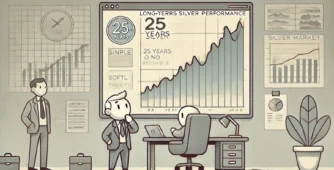When a Stock Hits All-Time Low
There’s a unique concept every investor must understand—what it truly means when a stock hits its all-time low. This doesn’t mean it’s just a temporary dip. An all-time low means the stock is now trading at the lowest price it has ever reached since listing. No one in the past ever bought the stock at a cheaper price. It is a red signal, a loud siren from the market. At this stage, it is not just a bell ringing—it’s a full-blown alarm telling you to relook at your decision.
Zooming In on the Fall
Let’s take the example of a stock that listed around ₹400 and went up to ₹1400 within months.

It then started slipping—₹1000, then ₹800, then ₹600, and finally crashed to ₹116, hitting lower circuits. Once a stock breaks down like this, recovery becomes very difficult. And this isn’t an isolated case—there are dozens of such stories in the market, and there will be many more in the future. Recognizing these patterns is crucial to protect your money.
Why Recovery Becomes So Tough
When a stock falls by 50%, you need a 100% gain to recover. If it falls by 70%, you need a 233% gain just to get back to where you started.

The deeper you go into the hole, the harder it becomes to climb out. So it’s always better to take a small loss early rather than wait for a miracle recovery that may never happen. A 20-25% loss can be earned back elsewhere, but once it goes beyond 50-60%, it becomes emotionally and financially draining.
Know When to Exit
If a stock breaks its all-time low and you’re still holding on, it’s time to pause and think. Ask yourself: Is my investment thesis still valid? Has something changed fundamentally? The market has access to all public data and collective knowledge. If a stock is hitting its all-time low, it’s for a reason. Everyone can’t be wrong. Don’t assume you’re the smartest in the room. Respect what the market is trying to tell you.
Listen to the Market’s Signals
The market is constantly communicating through price. It gives you small hints first—slow declines, breaking key levels. Then it shouts with a sharp fall. It’s your job to listen and act. Don’t wait for hope to save you. Act with logic, not emotion. A falling stock is not where your money needs to stay.
Final Thought: Protect Your Capital
Capital protection is the first rule of investing. If you lose money slowly and ignore the warning signs, recovery becomes harder and harder. Don’t fall into the trap of averaging down endlessly. Sometimes, exiting is the smartest decision. Read the signals, protect your capital, and live to invest another day.
From the market chaos of the 90s to mastering momentum investing, Ravi shares his powerful ETCS model for building lasting wealth. Expect practical tips on diversification, avoiding emotional traps, and thriving in today’s India. A must-watch for both new and seasoned investors!







